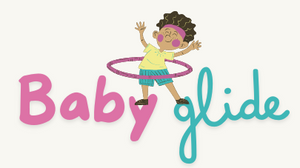Newborn Essentials
Newborn Essentials
Welcoming a new baby is both exciting and overwhelming for the entire family. With the baby’s arrival, everyday life changes completely: sleeping phases become irregular, feeding becomes frequent, and you’ll find yourself rocking, napping, and changing clothes more than ever.
Preparation can help you manage these challenging times and enjoy the indescribable moments of happiness and closeness even more. But what do you really need? We’ve prepared an overview of essential items for everyday life with a baby, along with helpful checklists.

Clothing
There are many fashion choices for little ones today, but newborns don’t need an extensive wardrobe. Keep it simple. Look for soft, comfy fabrics like pure cotton to avoid irritating baby’s sensitive skin. Bodysuits and rompers are ideal, as they stay in place and keep your little one warm. For easy changes, choose snap fasteners instead of buttons or zippers to prevent sore spots and scratches.
Here’s our list for your baby's first wardrobe. We recommend purchasing sizes 50/56 and 62/68 to ensure you’re covered for the first few weeks. You’ll need:
- 12 bodysuits
- 6 long-sleeved shirts or thin sweaters
- 6 rompers or pants
- 2-3 baby hats
- 2-3 baby jackets
- 2 pairs of scratch mittens
- 3 pairs of thin and thick socks (size 15/16)
- 10 muslin cloths
- 2-4 sleepsuits
- 4 bibs
- 2-3 leggings or tights
- 1-2 sleeping bags for nighttime

Why You Need Extra Clothing
You’ll need this much clothing because diaper changes and messy accidents are frequent in the first few weeks and months. Plus, babies grow quickly, so having larger sizes on hand is practical.
Good to know: Babies cool down more quickly than adults, so always have a hat and a sweater or jacket ready for your little one.
Bathing
Create a calm and soothing atmosphere while bathing and grooming your baby to strengthen your bond. After bath time or when applying lotion, take a moment for a gentle baby massage, play fun finger games, or sing to your baby. When choosing care products, opt for those with natural, skin-friendly ingredients.
In the beginning, gently washing your baby with a damp washcloth is sufficient until the belly button has healed. Later, some parents choose to bathe their baby daily, either because the baby enjoys it or for its calming effects.

Here are some useful bathing items:
- Bathtub with a bath seat
- Thermometer to ensure ideal water temperature (35-37°C)
- 5 washcloths
- 2-3 hooded bath towels
- Bath toys
- Gentle shower gel (shampoo, etc., optional)
- Brush/comb with extra-soft bristles or rounded tips
- Body lotion/skin cream with natural ingredients
- Nappy cream for a sore baby bottom
Nappy Changes
Your essentials for changing nappies include:
- Diapers or an alternative
- Wet wipes
- Nappy cream
Tip: Stockpile on odor-sealing disposable bags for baby diapers; they’re very practical when you’re out and about. Dispose of them with your household trash or at the nearest trash can.
When it comes to a changing facility at home, opinions vary. Some parents find a changing table necessary, especially if they have mobility issues, while others prefer the flexibility of a changing pad. Consider the following:
- Leaving a baby unattended on a changing table can be dangerous, especially once they start rolling over (around 4-5 months).
- A changing table is bulky and requires space, and when it’s no longer needed, it has to be disposed of, which isn’t very sustainable.
- Many parents find they barely use a changing table at all.
We suggest using a changing pad with a waterproof cover or a cotton cloth for comfort. You can easily move the pad around your home, and if you’re on the floor with the baby, you won’t need to worry about them falling off.

Nursery Room
Your baby needs its own space to sleep undisturbed and safely. A conventional crib is usually a good choice. Some parents prefer the crib to be next to their bed, while others opt for a separate room. Many parents end up co-sleeping, so a bedside bassinet might be a good option. Choose a suitable bed based on your and your baby’s preferences.
Storage solutions like a well-organized closet or dresser and shelves with boxes can help maintain a tidy nursery. We recommend investing in durable furniture that matches your home’s interior and can be used long-term, rather than cute but impractical baby furniture. For organizing hygiene items and toys, check out our handy storage boxes.
Feeding
Breastfeeding is the best choice and requires minimal equipment. However, to make the experience more comfortable, consider these helpful items:
- Nursing pillow
- Nursing bras
- Various nursing tops
- Nursing pads (reusable or disposable)
- Breast pump (manual or electric)
- Approx. 2-3 bottles with age-appropriate teats (especially for breast milk)
- Muslin cloths
If you’re formula-feeding, you’ll need:
- 1 formula dispenser
- 6 bottles, each with age-appropriate teats
- Bottle warmer
- Bottle cleaning brush
- Bottle sterilizer and dryer or drying rack
- Thermos bottle to keep water warm on the go
- Bibs or muslin cloths

On the Go
Be prepared for your first trip home from the hospital with an age-appropriate baby seat for safe transport. Later, you’ll need a car seat for future travels.
For walks, a good stroller is essential. Check out our range to find one that meets your specific needs. If you like having your baby close while keeping your hands free, consider a baby carrier or sling.
Create Memories
Don’t forget to capture those precious moments! Check out our photography items and casting sets.





